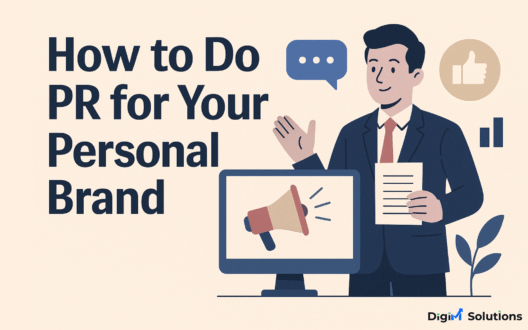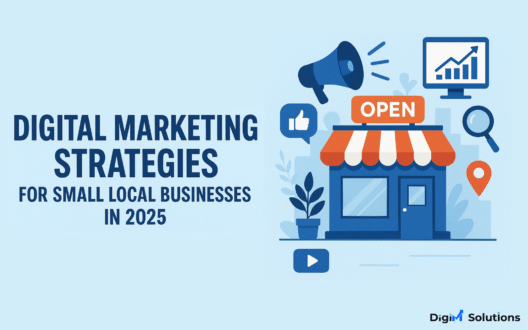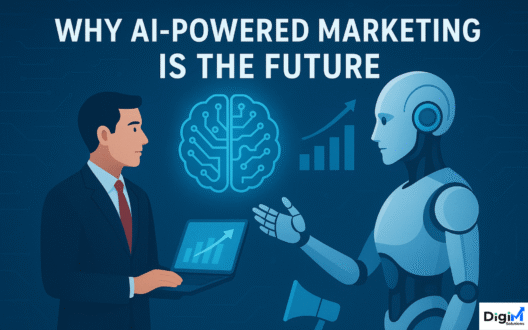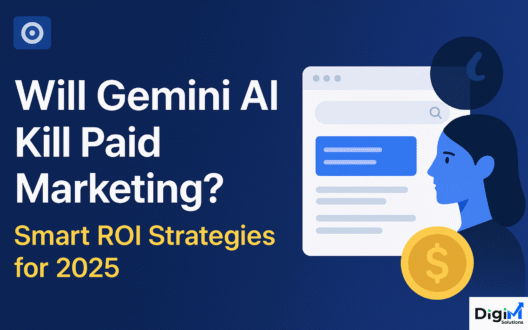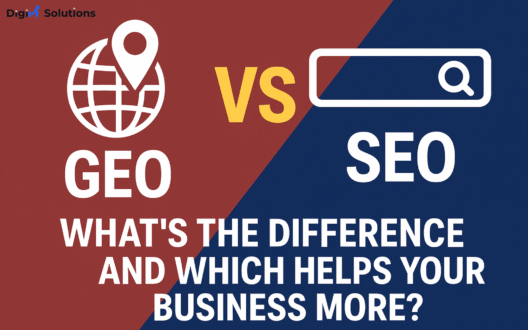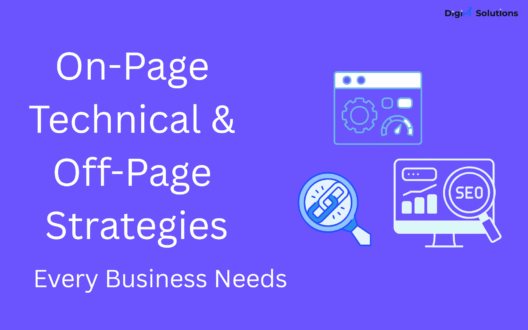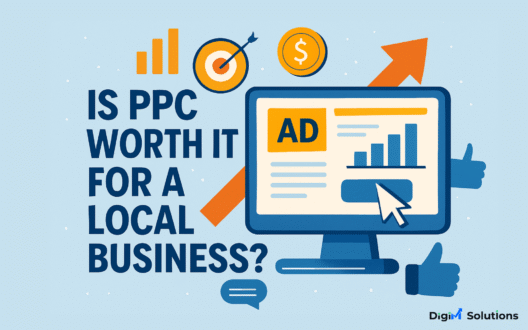Affordable Marketing: SEO or SEM – What Works in Indian Markets?
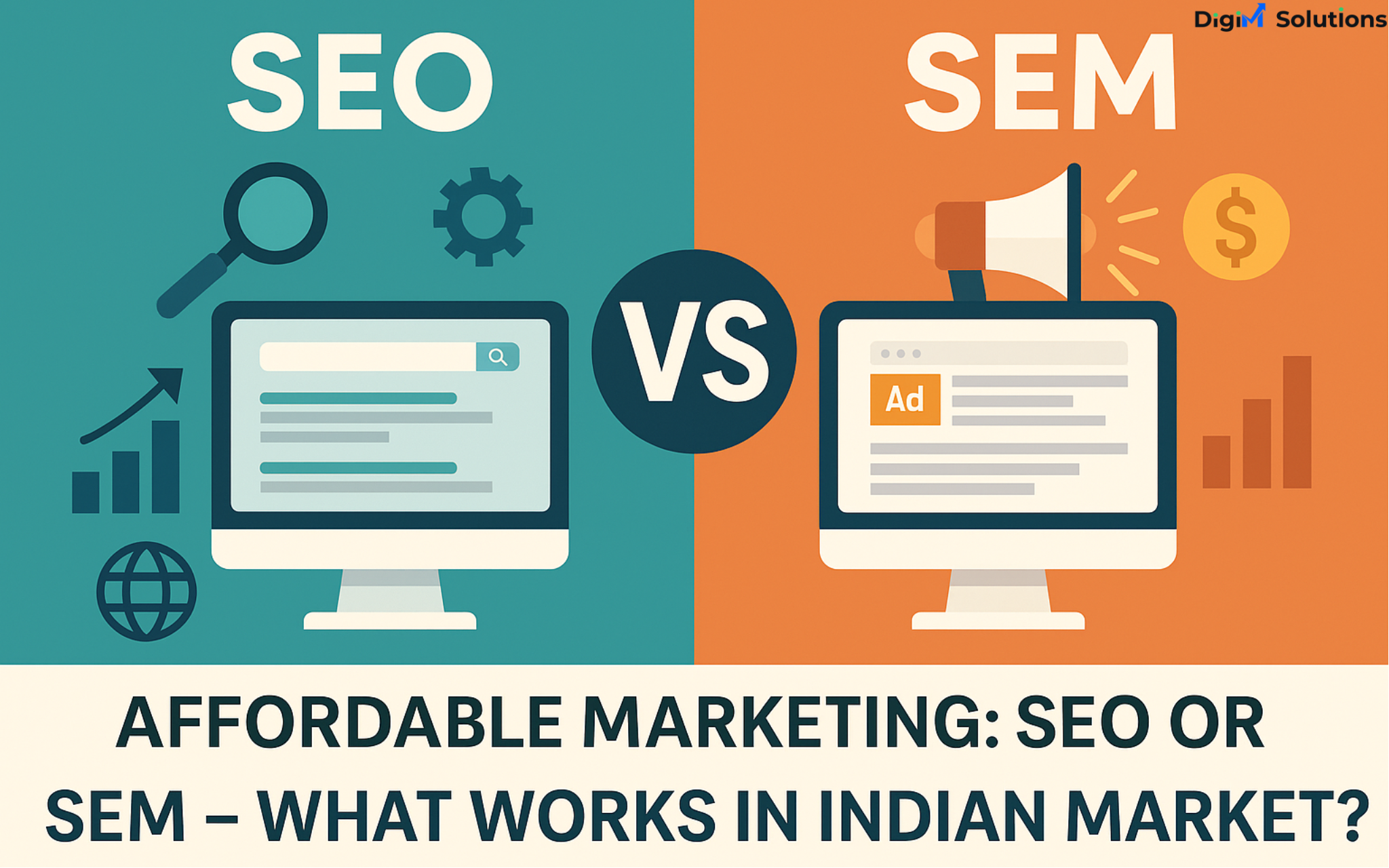
In today’s competitive landscape, small businesses and startups in India often face a common challenge: choosing the most cost-effective marketing strategy. Two of the most powerful tools in the digital space are SEO (Search Engine Optimization) and SEM (Search Engine Marketing) — but which one truly delivers better results for Indian markets without breaking the bank?
While SEO focuses on building long-term organic visibility, SEM offers immediate visibility through paid ads. The real question is: which approach gives you more value for your money when targeting local audiences across cities like Hyderabad, Vijayawada, or Vizag?
This blog breaks down the key differences, pros and cons, and ROI of SEO and SEM, helping you make the best choice for your business. Also, check out our detailed guide on Digital Marketing in India to explore more strategies tailored for Indian startups and SMEs.
What Is SEO and How Does It Work for Indian Businesses?
Search Engine Optimization (SEO) is a long-term digital marketing strategy focused on improving your website’s visibility on search engines like Google, without paying for ads. For Indian businesses—especially local and regional players—SEO can be a game changer in building sustainable online growth.
SEO involves three key components:
-
On-page SEO: Optimizing content, titles, meta descriptions, and internal links to target relevant keywords (e.g., “best web design company in Hyderabad”).
-
Off-page SEO: Building backlinks from other websites to increase your domain authority.
-
Technical SEO: Ensuring your website is mobile-friendly, fast-loading, and crawlable by search engines.
Indian internet users are rapidly increasing, with most people starting their product or service search on Google. Ranking high organically means more visibility, credibility, and trust among users—without the recurring costs of paid ads.
SEO is especially effective for niche markets and regional searches like “digital marketing agency in Warangal” or “SEO services in Telugu.” It also helps in local SEO, voice search optimization, and appearing in Google Maps.
Though SEO takes time (usually 3–6 months), the long-term ROI can far outweigh short-term ad spending. It’s perfect for businesses looking to grow steadily in India’s evolving digital landscape.
What Is SEM and How Does It Benefit Small Businesses?
Search Engine Marketing (SEM) refers to paid strategies used to increase a website’s visibility in search engine results, primarily through platforms like Google Ads. Unlike SEO, SEM offers immediate placement on top of search results, making it ideal for businesses looking for quick traffic, leads, or conversions.
In India, SEM is gaining popularity among startups and small businesses due to its scalability and precision targeting. You can run campaigns based on specific locations (e.g., “Vijayawada” or “Guntur”), demographics, languages (like Telugu or Hindi), devices, or even time of day. This allows Indian businesses to target the right customers at the right moment.
The biggest benefit of SEM is speed. While SEO may take months, SEM can deliver results almost immediately after the campaign goes live. You pay only when someone clicks your ad (Pay-Per-Click or PPC), making it budget-friendly for campaigns with a clear ROI goal—like product launches, event promotions, or festive sales.
For small businesses, especially in competitive markets or seasonal industries, SEM offers an excellent way to test different marketing messages, generate leads quickly, and gain visibility in saturated search results. However, unlike SEO, SEM requires constant spending to maintain traffic—once the budget stops, so does the visibility.
SEO vs SEM: Key Differences You Should Know
Understanding the difference between SEO and SEM is crucial for choosing the right digital marketing strategy for your business. While both aim to improve your visibility in search engine results, they function very differently in terms of cost, timeline, and long-term value.
SEO is a long-term, organic approach. It focuses on optimizing your website to rank naturally for relevant keywords. This includes writing keyword-rich content, improving site speed, and gaining backlinks. It requires time—typically 3 to 6 months—to see significant results. But once you start ranking, you can receive a steady flow of free traffic without ongoing ad spend.
SEM, on the other hand, is a paid strategy that includes Pay-Per-Click (PPC) ads like Google Ads. It places your business at the top of search results instantly, as long as you’re paying for the clicks. This is ideal for immediate results, product launches, and time-sensitive campaigns.
The key difference lies in cost and longevity: SEO takes time but offers lasting results, while SEM costs money continuously but delivers instant visibility. For Indian small businesses, a smart mix of both often works best—use SEM for quick wins and SEO for building sustainable, long-term digital presence.
Which Delivers Better ROI in Indian Markets?
Return on Investment (ROI) is a critical metric for every business, especially in price-sensitive markets like India. Both SEO and SEM can deliver strong ROI, but the nature of returns differs in terms of speed, scalability, and sustainability.
SEO typically has a slower ramp-up time. It may take months to see noticeable results, but once you start ranking organically, the traffic you receive is essentially free. This makes SEO highly scalable and sustainable for long-term ROI. It also helps build trust, authority, and brand recall—especially in regional markets where word-of-mouth still plays a big role.
SEM, in contrast, delivers ROI faster. You can launch a campaign and begin generating leads or sales within hours or days. This makes it ideal for businesses with short sales cycles or limited-time offers. However, SEM ROI depends heavily on campaign optimization, keyword targeting, ad quality, and competition. If not managed well, the costs can outweigh the returns.
For Indian startups and SMEs, the ideal strategy often blends both. Use SEM for immediate traction and SEO for long-term brand growth. Over time, the combination helps lower customer acquisition costs while maintaining consistent visibility in search results.
When Should You Choose SEO Over SEM?
Choosing SEO over SEM makes sense when your business is focused on long-term digital growth and has the patience to build authority gradually. SEO is ideal for businesses that want to build brand credibility, generate consistent organic traffic, and reduce long-term customer acquisition costs.
If your audience frequently searches for information before making a decision—such as in industries like education, healthcare, legal services, or SaaS—SEO works exceptionally well. It positions your website as a trustworthy resource and brings in highly qualified leads. SEO is also more effective when your competition isn’t aggressively investing in organic strategies, giving you the opportunity to rank faster in niche categories.
Additionally, SEO is well-suited for local or regional businesses in India, especially those targeting long-tail keywords or queries in vernacular languages like Telugu, Tamil, or Hindi. These terms often have lower competition and higher conversion potential because they’re more specific to user intent.
For example, a blog post targeting “best website developer in Karimnagar” or “affordable digital marketing agency in Nellore” could rank quickly and bring in quality leads.
If you’re working with a modest budget and are looking for sustained, compounding growth over time, SEO should be your primary strategy.
When SEM Might Be a Smarter Choice Than SEO
While SEO is great for long-term growth, Search Engine Marketing (SEM) can be a smarter choice in certain business scenarios—especially when speed and visibility are critical. For Indian businesses launching a new product, running a festival-based campaign, or entering a competitive market, SEM can offer instant results.
One of the biggest advantages of SEM is its immediacy. You can set up a Google Ads campaign, define your audience by location (e.g., Hyderabad, Visakhapatnam), language, age group, and interests, and begin appearing on top of search results within hours. This is particularly effective for local services like salons, restaurants, coaching centers, or e-commerce platforms promoting flash sales.
SEM also offers flexibility. You can test multiple ad creatives, headlines, and calls to action to see what resonates best with your audience. This data-driven feedback loop helps businesses optimize campaigns quickly and scale what works.
Moreover, SEM is ideal when entering highly competitive industries where ranking organically through SEO may take months or even years. It allows you to buy your way into visibility, generate traffic immediately, and build a presence while your SEO efforts are still ramping up.
If your goal is fast lead generation or event-based marketing, SEM is the smart move.
Final Verdict: Which Strategy Works Best for Your Business?
Choosing between SEO and SEM ultimately depends on your business goals, budget, and the timeline you’re working with. Both strategies have their strengths, and the best choice often lies in using them strategically together, rather than in isolation.
If your goal is long-term brand visibility, organic traffic, and reduced marketing costs over time, SEO is the better choice. It’s ideal for businesses building authority in a niche, offering information-based services, or targeting regional audiences. SEO also supports your overall digital ecosystem—helping with content marketing, social media, and user trust.
On the other hand, if you need immediate traffic, are running a time-sensitive campaign, or want to test a product or service in a new market, SEM provides fast and measurable results. It’s highly effective when launching a new business, running festival promotions, or entering competitive spaces.
For most Indian businesses—especially startups and SMEs—a hybrid approach works best. Use SEM to generate initial visibility and leads while gradually building your SEO to ensure long-term sustainability. Over time, this combination can lower your cost per acquisition and maximize your reach across both paid and organic channels.
The key is understanding your current stage and scaling with the right balance of speed and stability.
How Digim Solutions Can Help You Choose the Right Approach
At Digim Solutions, we understand that every business is different—and so are its marketing needs. Whether you’re a local retailer, a regional startup, or a service provider looking to expand your digital presence, our team helps you identify the right balance between SEO and SEM based on your goals, budget, and target market.
For businesses aiming for long-term growth, we offer comprehensive SEO strategies tailored for the Indian market. From keyword research and technical audits to multilingual content creation and local SEO, we ensure your business ranks organically and sustainably.
Need quick traction or launching a new product? Our SEM experts craft high-converting paid campaigns on Google Ads, Facebook, and YouTube. We specialize in geo-targeted and language-specific ads—perfect for reaching niche audiences in cities like Hyderabad, Vijayawada, and Warangal, or even regional language speakers like Telugu and Hindi users.
We also provide performance tracking, A/B testing, and monthly reporting, so you always know how your campaigns are performing and where to optimize further.
Ready to find out what works best for you?
Contact Digim Solutions today for a free digital marketing consultation—and let us help you grow smarter, faster, and affordably in Indian markets.
Request a free quote
We offer professional SEO services that help websites increase their organic search score drastically in order to compete for the highest rankings even when it comes to highly competitive keywords.


